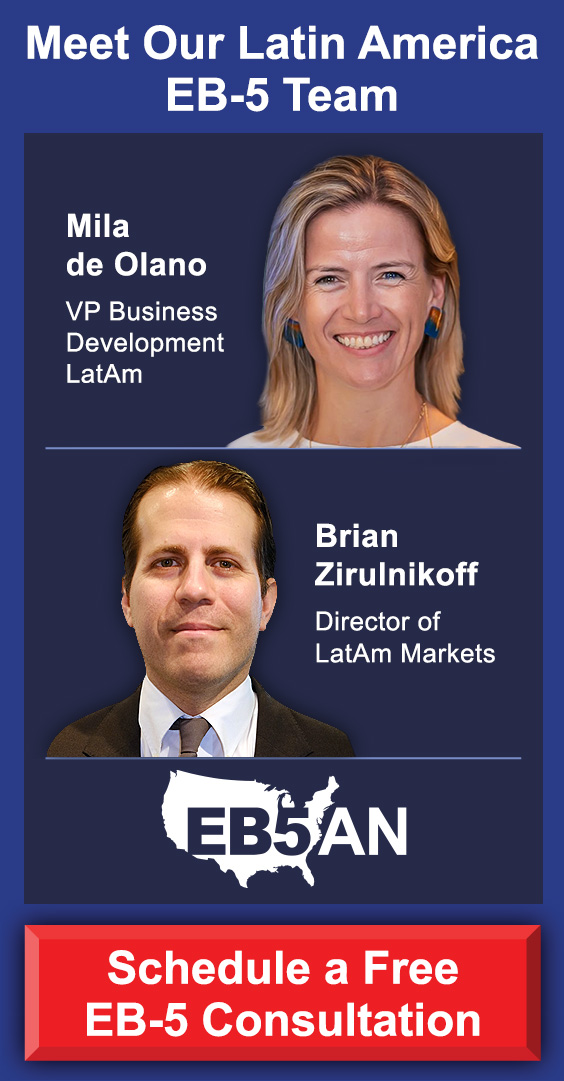The EB-5 Immigrant Investor Program has long been a popular pathway for foreign nationals to gain permanent residency in the United States. A crucial aspect of the program is the process through which applicants file for their Green Cards.
One of the most important developments in recent years is the concept of “concurrent filing,” a procedure that allows certain EB-5 investors to expedite their path to permanent residency. However, this benefit may not be universally available in the near future. Once the Visa Bulletin indicates retrogression in the set-aside categories, applicants from certain countries—especially India and China—will no longer benefit from concurrent filing.
In this article, we will dive into the concept of concurrent filing, explain how it works, and explore who stands to benefit from it.
What Is Concurrent Filing?
How Does Concurrent Filing Work?
- Eligibility to File Concurrently
- Filing Forms I-526E and I-485 Simultaneously
- Approval and Green Card Issuance
Who Does Concurrent Filing Benefit?
The Impact of Retrogression: Who Will Be Affected?
EB5AN Can Assist You With Concurrent Filing
What Is Concurrent Filing?
Concurrent filing refers to the ability of EB-5 investors to file both their Form I-526E (Immigrant Petition by Regional Center Investor) and Form I-485 (Application to Register Permanent Residence or Adjust Status) simultaneously.
Form I-526E is the first step in the EB-5 process and is used to establish an investor’s eligibility for the program. Form I-485, on the other hand, is used to adjust the investor’s status from a temporary non-immigrant to a lawful permanent resident (Green Card holder).
Before the EB-5 Reform and Integrity Act (RIA) passed in 2022, EB-5 investors had to wait for their I-526E petitions to be approved before they could file their I-485 applications. This often meant a significant delay before they could apply for a Green Card, sometimes leaving investors in an uncertain and prolonged limbo.
Concurrent filing, however, allows investors to submit both applications at the same time, streamlining the process and helping investors secure their permanent resident status faster.
How Does Concurrent Filing Work?
The process of concurrent filing is relatively straightforward but requires careful attention to timing and documentation. Here’s an overview of how it works.
Eligibility to File Concurrently
Not all EB-5 applicants are eligible for concurrent filing. To file concurrently, the applicant must be physically present in the U.S. in lawful nonimmigrant status and be eligible for an adjustment of status. This also means there needs to be a visa immediately available to them upon filing.
If the investor is outside of the United States, they must wait for their I-526E approval and then proceed with consular processing to obtain their immigrant visa. The adjustment of status process does not apply to foreign investors that reside outside the U.S.
Filing Forms I-526E and I-485 Simultaneously
Once an investor has established that they are eligible for concurrent filing—including by consulting with an experienced immigration attorney—they can take advantage of this process to submit both of the forms discussed above at the same time, hence the name “concurrent filing.” They can also apply for work and travel permits at this stage, but more on that below.
Approval and Green Card Issuance
If there are no issues with either petition or the application, the investor and their immediate family members (their spouse and children under 21) will receive their EB-5 conditional Green Cards.
This process can take several months, depending on processing times. Applicants in EB5AN’s rural TEA projects have been receiving I-526E approvals in under 10 months.
Who Does Concurrent Filing Benefit?
Concurrent filing provides significant advantages for many EB-5 investors. Some of the main ones include:
Faster Green Card Process
As discussed above, investors who are eligible for concurrent filing are able to submit both their Form I-526E and Form I-485 at once. This significantly reduces the time spent waiting for permanent residency.
In the traditional process, applicants could face several months or even years of delay waiting for the I-526E petition to be approved before they could apply for an adjustment of status. With concurrent filing, investors can start the Green Card process immediately as they submit their I-526E petition.
Work Authorization and Travel Flexibility
One of the most significant benefits of concurrent filing stem from the work and travel benefits it offers—benefits that can often be obtained in only a few weeks.
While waiting for their Green Cards, EB-5 investors can also receive work and travel authorization by concurrently filing Form I-765 and Form I-131. Respectively, these applications grant investors employment authorization documentation (EAD) and advance parole (AP).
An EAD allows you to work for any employer anywhere in the U.S.—or to start your own business if you wish. These work benefits make it much easier for investors to remain in the U.S. while awaiting their Green Card.
Meanwhile, AP grants you the freedom to travel abroad and re-enter the U.S. without affecting your visa status. This flexibility is particularly beneficial for investors who need to work or travel while their Green Card applications are pending.
Crucially, an investor’s dependent family members can also apply for these benefits, meaning they can also enjoy the freedom they grant their holders.
Maintaining Legal Status
Once an individual submits an adjustment of status application, their legal status in the U.S. shifts to “adjustment pending” as soon as USCIS receives the filing. This designation allows them to stay in the country even if their previous visa conditions change. For instance, an H-1B visa holder who loses their job after filing can lawfully remain in the U.S. despite no longer having work authorization.
This safeguard is especially beneficial for applicants with children in school, those experiencing job transitions, or individuals facing unexpected layoffs. It ensures continuity and flexibility while they await a decision on their Green Card application. As long as they have received the USCIS receipt notice confirming their adjustment of status filing, maintaining their original visa status is not required.
The Impact of Retrogression: Who Will Be Affected?
While concurrent filing has been a significant advantage for many EB-5 investors, it will no longer be available to all nationalities once visa retrogression occurs in the set-aside categories, particularly for investors born in India or China.
Visa Retrogression Explained
The U.S. Department of State publishes a monthly Visa Bulletin that indicates the availability of immigrant visas for various categories, including EB-5 investors.
Retrogression happens when demand for visas in a particular category surpasses the available supply, leading to a shift backward in the category’s cut-off dates. This means that applicants from countries with high demand for EB-5 visas, like India and China, may face delays in receiving their visas.
Once retrogression takes place in the set-aside EB-5 categories—something that the January 2025 Visa Bulletin warned may be happening soon—applicants from India and China will no longer be able to file concurrently, as their priority dates will no longer be current.
This retrogression may push these applicants back to the traditional, sequential process, where they must wait for their I-526E petition to be approved before they can file for an adjustment of status with Form I-485. The result will be a longer waiting time and potentially greater uncertainty in the EB-5 process for investors from these countries.
EB5AN Can Assist You With Concurrent Filing
As the Visa Bulletin continues to show changes, retrogression in the set-aside categories—especially for investors from India and China—will mean that these applicants will no longer be able to enjoy the benefits of concurrent filing. As such, investors from these countries should be aware of the potential for delays and plan accordingly.
For those who can take advantage of concurrent filing, now is the time to act. And one of the first steps is partnering with EB-5 experts who can help you through the process.
EB5AN has helped more than 2,300 families from 70+ countries become lawful permanent residents of the United States. Our team has more than a decade of experience, and we offer our clients first-rate, low-risk EB-5 regional center projects with a 100% USCIS project approval rate.
If you would like to know more about how you can take advantage of concurrent filing, book a free call with our expert team today.










